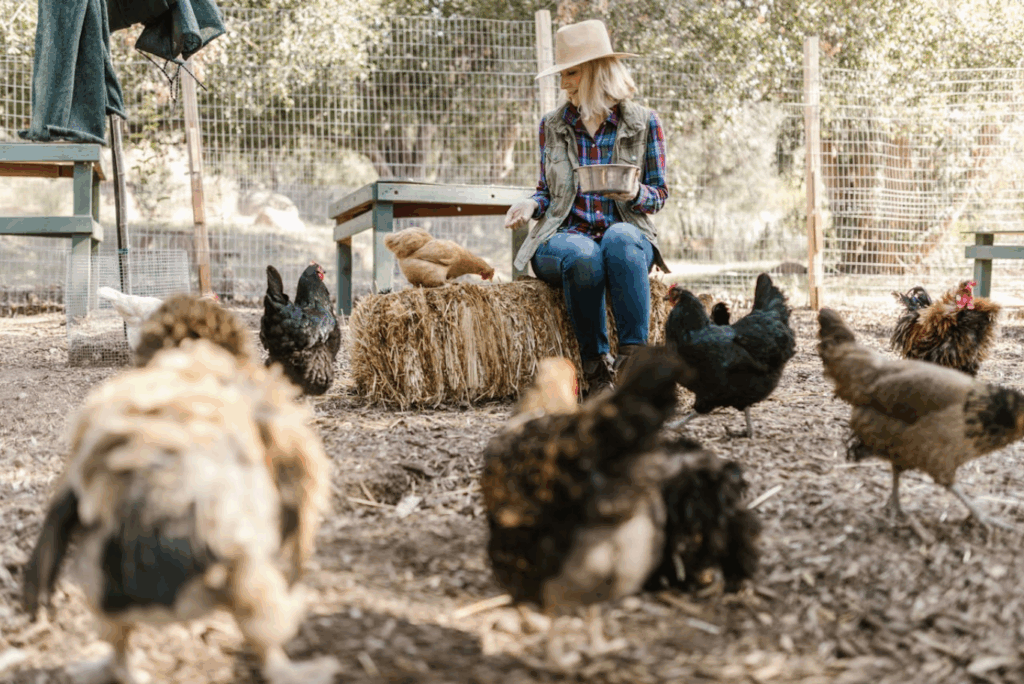
Homesteading balances self-sufficiency with a simpler way of life. Imagine trading your computer for a shovel and your smartphone for a burner phone that keeps you connected without the constant scrolling.
Homesteading is more than just a trend. It’s a lifestyle that helps individuals return to humanity’s roots, offering a serene escape from the hustle and bustle of modern society. This is your guide to the history, evolution, and practicalities of what homesteading truly involves.
History of Homesteading
Dating back to the 19th-century United States, homesteading was a government initiative that allotted land to individuals willing to cultivate it. It encouraged westward expansion, with pioneers setting up self-sufficient farms and homes.
The hardy souls planted crops, raised livestock, and embraced the rugged challenges of the wild frontier. These early homesteaders sought independence, opportunity, and a connection to the land they worked.
The Modern Homesteading Movement
Fast forward to the present day, and homesteading is a thriving movement. In a world consumed by technology and urban living, modern homesteading offers a return to a simpler, more sustainable way of life.
More and more people are drawn to the idea of growing their own food, living off the grid, and reducing their environmental footprint. The modern homesteading movement reflects a desire for greater self-reliance, mindfulness, and a deeper connection with nature.
What Does Homesteading Entail?
Homesteading is a multifaceted journey toward self-sufficiency and sustainability. It involves cultivating a connection with the land through practices such as organic gardening, raising livestock, and embracing off-grid living. Homesteaders prioritize eco-friendly habits like composting, rainwater harvesting, and renewable energy to reduce their environmental footprint.
This lifestyle demands a diverse skill set, from preserving food and making herbal remedies to woodworking and basic carpentry. It’s about fostering creativity, resourcefulness, and a profound respect for nature’s cycles. Homesteaders embody resilience, adaptability, and a deep-rooted commitment to living in harmony with the earth.
By immersing themselves in the challenges and rewards of homesteading, individuals achieve self-sufficiency and cultivate a sense of purpose, mindfulness, and a lasting connection to the environment they steward. This lifestyle forged a relationship with nature and an appreciation for the land and all it provides.
Homesteaders’ Toolkit
To thrive as a modern homesteader, you’ll need the right tools for the job. Essential items include gardening tools like shovels, hoes, and watering cans alongside equipment for raising animals, such as chicken coops and beekeeping supplies.
DIY projects can enhance your self-sustainability, from building rainwater collection systems to constructing compost bins. For those on a budget, creativity, resourcefulness, and a willingness to learn new skills are invaluable assets in creating a functional and productive homestead.
Sustainable Practices in Homesteading
Sustainability lies at the heart of homesteading, guiding every decision and practice. Homesteaders prioritize eco-friendly living by implementing practices that minimize their environmental impact.
From organic gardening and permaculture techniques to rainwater harvesting and renewable energy sources, homesteaders strive to create a harmonious relationship with nature. By reducing waste, conserving resources, and embracing sustainable habits, homesteaders play a vital role in preserving the planet for future generations.
Homesteading Myths Debunked
Despite its increasing popularity, homesteading is often misunderstood. One common myth is that homesteaders live entirely off the grid, disconnected from modern conveniences. In reality, many homesteaders balance self-sufficiency and utilizing technology when necessary.
Another misconception is that homesteading is an isolated and lonely lifestyle. In truth, homesteaders often build strong communities, sharing knowledge, resources, and support with like-minded individuals. By debunking these myths and shedding light on the realities of homesteading, you can better appreciate the diverse and enriching nature of this lifestyle.
Embracing the Homesteading Lifestyle
For those considering a leap into homesteading, the journey is both challenging and rewarding. Embracing the homesteading lifestyle means committing to a path of self-sufficiency, resilience, and continuous learning. It requires dedication, hard work, and a willingness to adapt to nature’s unpredictable rhythms.
However, the rewards are plentiful — fresh organic produce, a deep sense of fulfillment, and a strong connection to the environment. By taking small steps, learning from others, and embracing the inherent joys of homesteading, individuals can embark on a transformative and fulfilling journey toward a more sustainable way of life.
Cultivating Resilience, Sustainability, and Connection
Homesteading is more than just a lifestyle. It’s a mindset — a commitment to living intentionally, sustainably, and harmoniously with nature. When you explore the history, practices, myths, and cultural representations of homesteading, you’ll uncover a tapestry of resilience, creativity, and community.
Whether you’re a seasoned homesteader or a curious observer, the values of self-sufficiency, sustainability, and connection to the land are sure to resonate. Remember that the journey to homesteading begins with a single step — a step toward a more resilient, mindful, and harmonious existence.
By: Chris Bates









